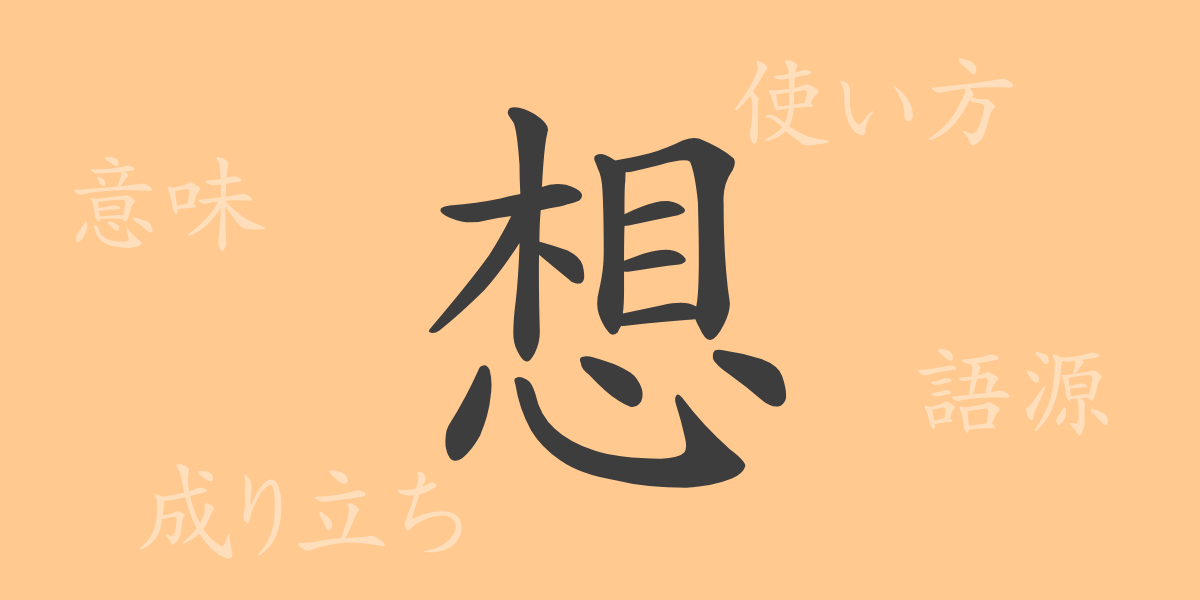The meaning of each Kanji character is deeply rooted in its shape and history. ‘想’ (そう, sō) is no exception among the commonly used Kanji in Japanese. This article delves into the Kanji ‘想’, exploring its origins, contemporary usage, readings, stroke count, and radicals. It also covers phrases, idioms, and proverbs involving ‘想’, offering a glimpse into the rich expressions of the Japanese language.
Origins of 想 (そう – Sō)
The Kanji ‘想’ traces back to ancient Chinese script. It is formed by combining ‘相’ (そう, sō), representing mutual action or bearing, with ‘心’ (しん, shin), which symbolizes the heart or mind. Originally depicting the act of visualizing or imagining in one’s mind, it evolved from pictographic characters and came to symbolize the functions of emotions and thoughts.
Meaning and Usage of 想 (そう – Sō)
In modern Japanese, ‘想’ relates to abstract concepts such as ‘thought’, ’emotion’, and ‘imagination’. It also encompasses anticipatory feelings with terms like ‘期待’ (expectation) and ‘想定’ (assumption). Typically, it is used in verbs and nouns like ‘想う’ (to think) and ‘想像’ (imagination).
Readings, Stroke Count, and Radical of 想 (そう – Sō)
The character ‘想’ has several features of interest for learners of Japanese.
- Readings: On’yomi (音読み) ‘ソウ’ (Sō), Kun’yomi (訓読み) ‘おも・う’ (omou).
- Stroke Count: ‘想’ consists of 13 strokes.
- Radical: The radical is 心 (also known as 忄 or りっしんべん – risshinben), related to the heart and mind.
Phrases and Idioms Using 想 (そう – Sō) and Their Meanings
Idioms and phrases including ‘想’ are abundant in Japanese, each carrying unique meanings:
- 思い出 (おもいで – omoide): Memories or recollections of the past.
- 愛想 (あいそ – aiso): Pleasant manners or attitudes intended to please others.
- 予想 (よそう – yosō): Prediction or estimation of future events.
- 感想 (かんそう – kansō): Personal feelings or thoughts about experiences or events.
These expressions are frequently used in daily life, illustrating their importance in Japanese communication.
Conclusion on 想 (そう – Sō)
The Kanji ‘想’ plays a crucial role in depicting various aspects of mental activity in the Japanese language. Knowledge of its readings, stroke count, and radical helps deepen understanding of Japanese. The idioms and proverbs containing ‘想’ reflect the culture and psychological landscapes of the Japanese people. Through this article, we hope you have gained insight into the depth of ‘想’ and enjoy a richer experience of Japanese expression.

























